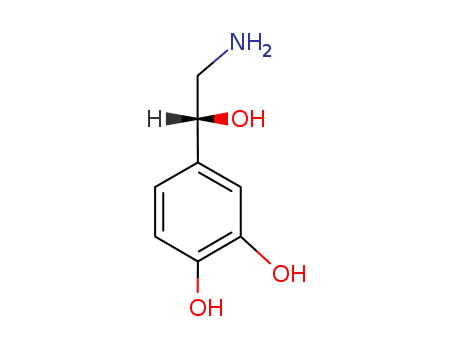10.1021/jm900888c
The research focuses on the development of potent, selective, and orally efficacious norepinephrine reuptake inhibitors (NRIs). The purpose of this study was to create a novel series of 1-(3-amino-2-hydroxy-1-phenyl propyl)-1,3-dihydro-2H-benzimidazol-2-ones that could selectively inhibit the human norepinephrine transporter (hNET) while demonstrating selectivity over the human serotonin (hSERT) and dopamine transporters (hDAT). The researchers synthesized and tested various compounds, leading to the discovery of several potent NRI candidates with low nanomolar hNET potency and excellent selectivity. Notably, compounds 20 and 22 showed similar potency to known NRI drugs like reboxetine and atomoxetine, along with good pharmacokinetic profiles and significant efficacy in reducing tail skin temperature in a telemetric rat model, suggesting potential for treating conditions associated with norepinephrine deficiency, including acute and neuropathic pain.
10.1021/jm00377a021
The study investigates the synthesis and pharmacological properties of a series of nontricyclic antidepressant agents derived from cis- and trans-1-amino-4-aryltetralins. The researchers synthesized various compounds, including cis and trans aminotetralins with different substituents in the 4-aryl ring, such as chlorine, bromine, trifluoromethyl, and methoxy groups. These compounds were tested for their ability to inhibit the uptake of neurotransmitters like dopamine (DA), serotonin (5-HT), and norepinephrine (NE) in vitro. The study found that certain cis compounds, particularly those with electron-withdrawing groups in the 4-position of the 4-aryl ring, exhibited potent and selective 5-HT uptake blocking activity, which is a desirable property for antidepressant agents. The trans compounds were generally more potent inhibitors of NE uptake and also blocked DA uptake. The study also involved the resolution of racemic mixtures into their enantiomers, revealing significant differences in activity between the dextro and levo forms, with the dextro enantiomers of cis compounds being highly selective for 5-HT uptake blockade. The findings suggest that these compounds could serve as potential antidepressants with reduced side effects compared to traditional tricyclic antidepressants.
10.1021/jm00300a005
The research investigates the inhibitory effects of various substituted benzimidazoles on phenethanolamine N-methyltransferase (PNMT), an enzyme responsible for the final step in epinephrine biosynthesis. The study aims to identify compounds that can effectively inhibit PNMT, potentially offering new therapeutic strategies for conditions related to epinephrine regulation. The researchers synthesized a series of substituted benzimidazoles and tested their inhibitory effects in vitro on bovine adrenal PNMT. They found that compounds with a free amino group in the 2-position and with substituents like Cl, NO?, or CF? in the 5 or both 5 and 6 positions were the most potent inhibitors, achieving 18-55% inhibition of enzyme activity at 0.28 μg/ml. Several of these compounds also selectively lowered adrenal epinephrine levels in mice without significantly affecting norepinephrine levels when administered in vivo. The study concludes that substituted benzimidazoles hold promise as PNMT inhibitors, but further research is needed to explore their potential therapeutic applications and to understand the mechanisms behind their in vivo activity.
10.1021/jm801162z
The research aimed to identify potent and selective compounds for both the dopamine transporter (DAT) and serotonin transporter (5-HTT) relative to the norepinephrine transporter (NET) to potentially develop new pharmacotherapies for treating cocaine abuse. The study synthesized and evaluated a series of 3′-(substituted phenyl)tropane-2′-carboxylic acid methyl esters (7a-g), 3′-(4-methoxyphenyl)tropane-2′-carboxylic acid esters (8a-j), and 3′-(4-methoxyphenyl)-2′-[3-(4′-methylphenyl)isoxazol-5-yl]tropane (9). Key chemicals used included natural (-)-cocaine as the starting material, various Grignard reagents, bromine, iodine chloride, and different alcohols for esterification. The most potent and selective compound identified was 3′-(4-methoxyphenyl)tropane-2′-carboxylic acid 2-(3-iodo-4-aminophenyl)ethyl ester (8i), with an IC50 value of 2.5 nM for the DAT and Ki values of 3.5 and 2040 nM for the 5-HTT and NET, respectively. The study concluded that mixed action inhibitors of DAT and -HT5T, such as compound 8i, warrant further investigation as potential treatments for cocaine addiction.



 T+,
T+, C,
C, F
F

